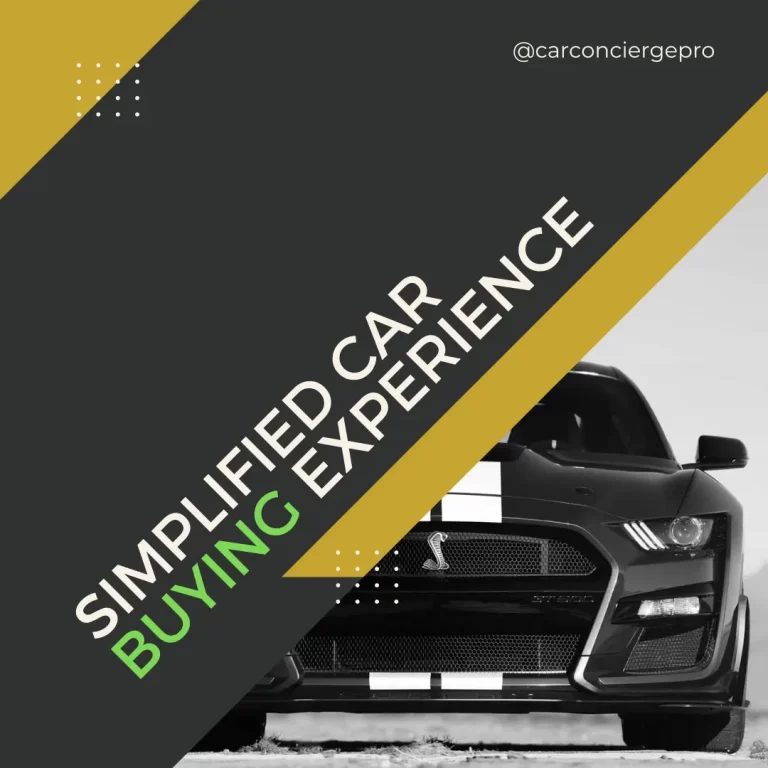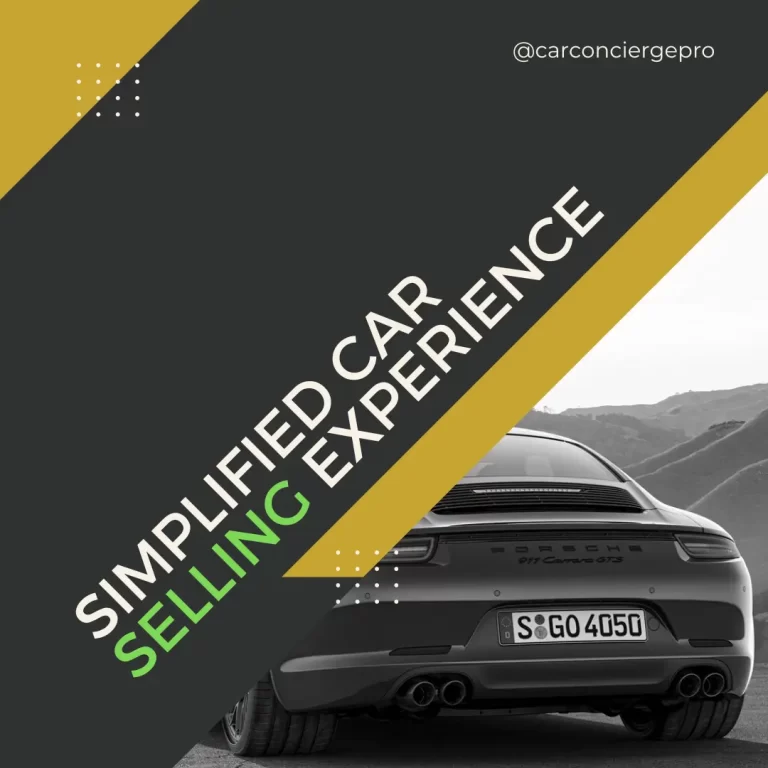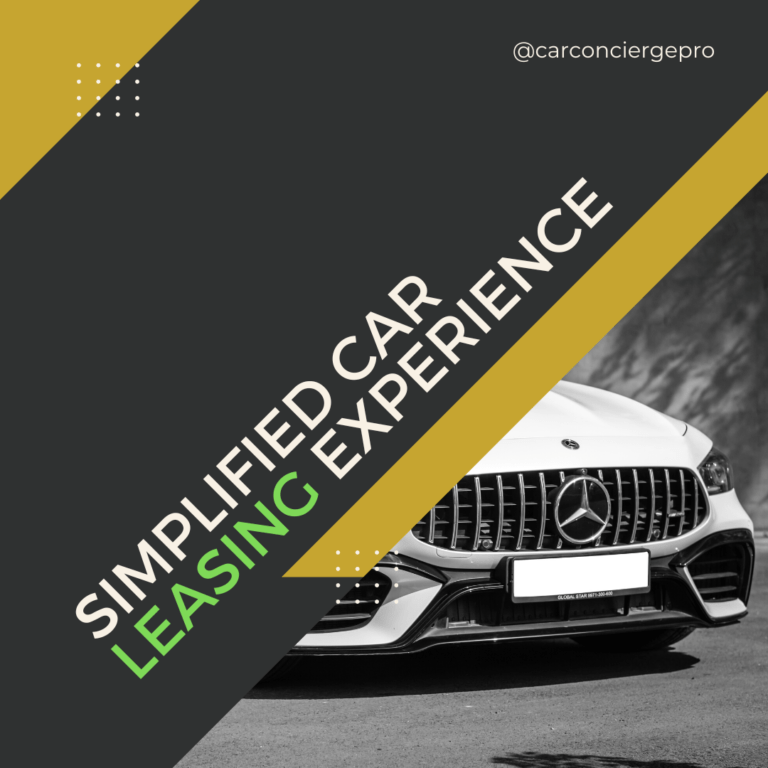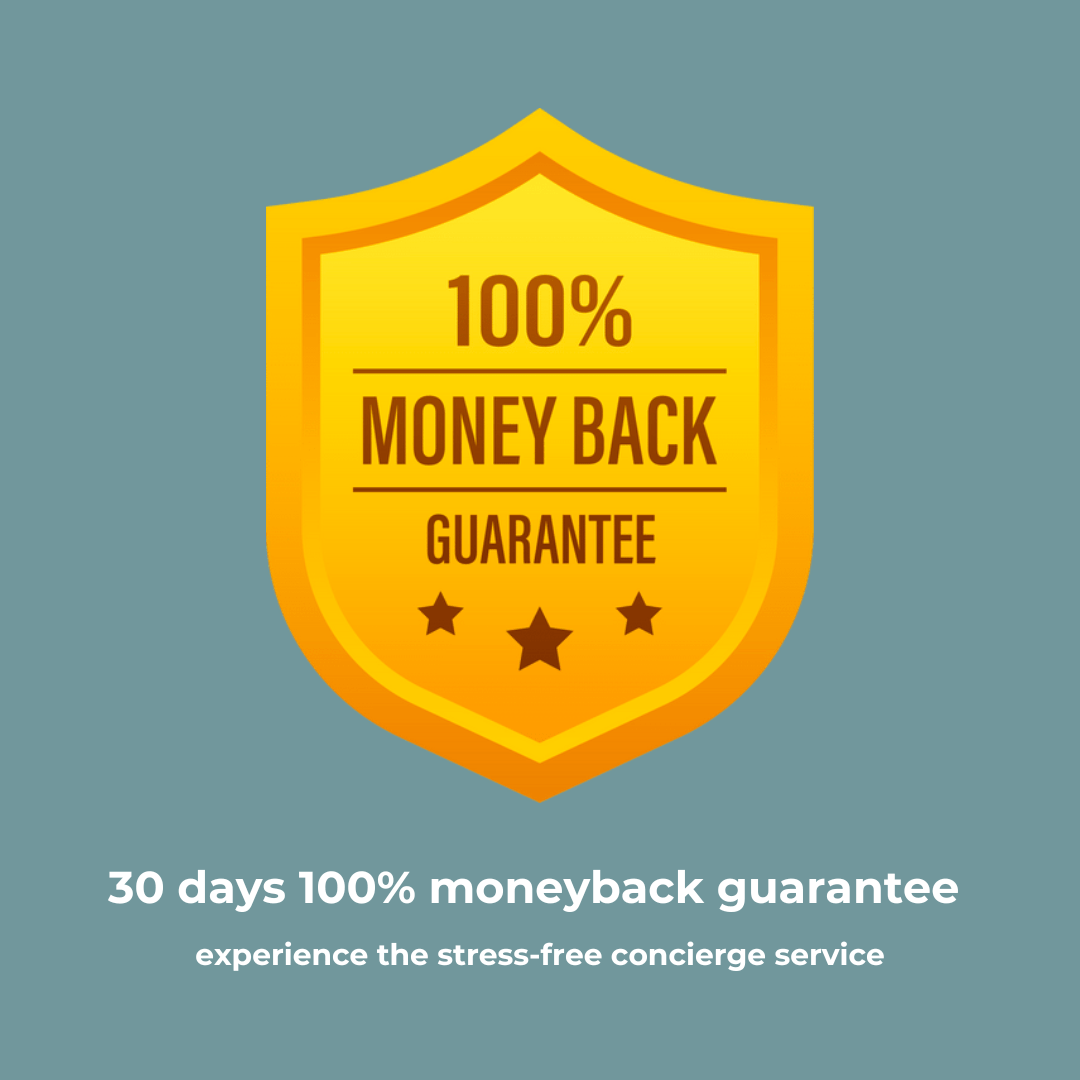The Grand Highlander Hybrid excels not only in style but also in practicality. Its spacious three-row seating provides ample legroom and ample comfort for everyone on board, with a flexible cargo area that adapts to a variety of needs, from daily errands to family road trips. Advanced infotainment options, smartphone connectivity, and driver-assist. Such innovations improve safety and convenience, turning every journey into a more enjoyable ride.
When considering whether to lease or buy, it’s essential to evaluate both short-term convenience and long-term financial impact. With leasing, drivers often benefit from reduced monthly costs and the option to upgrade every few years, whereas buying allows you to build equity and maintain ownership without mileage limits. Understanding these trade-offs ensures that your choice aligns with your lifestyle and financial goals.
Additionally, the Grand Highlander Hybrid’s fuel-efficient powertrain and hybrid technology contribute to lower overall operating costs, making it a smart option for families and eco-conscious drivers alike. Efficient performance paired with Toyota’s reputation for reliability means fewer unexpected maintenance expenses, further supporting your financial planning over time.
Finally, leveraging expert negotiation strategies can dramatically improve your purchasing experience. From timing your deal to comparing multiple financing offers, a knowledgeable guide helps you uncover incentives, avoid hidden fees, and negotiate terms that favor your budget. This approach not only saves money but also adds peace of mind, ensuring you drive away confident in your decision.
The Grand Highlander Hybrid also stands out for its range of trim levels and options, catering to different preferences and budgets:
- XLE: Starting around $48,000, includes standard hybrid powertrain, Toyota Safety Sense, and 12.3-inch infotainment display.
- Limited: Starting around $53,000, adds premium leather seating, panoramic sunroof, upgraded audio, and advanced safety tech.
- Platinum: Starting around $58,000, features the highest luxury upgrades, including ventilated seats, a premium JBL audio system, 20-inch alloy wheels, and additional driver-assist features.
With a mix of practicality, driving dynamics, and passenger comfort, each trim offers options that cater to different needs while keeping value in mind.
Table of Contents
ToggleLease vs. Buy: A Quick Financial Breakdown
The core difference between leasing and buying is what you’re paying for. With a lease, you’re essentially renting the vehicle for a set period, paying for the expected depreciation. With a purchase, you’re financing the entire value of the car, with the goal of owning it outright.
The Cost of Leasing: Depreciation & Money Factor
When you lease a Grand Highlander, your monthly payment is calculated based on three key factors: the capitalized cost (the vehicle’s price), the residual value (its projected value at the end of the lease), and the money factor (the interest rate equivalent). Your payment covers the difference between the capitalized cost and the residual value, plus the money factor and taxes. This is why lease payments are almost always lower than loan payments for the same car. You aren’t paying for the full car, just its value loss over a few years.
Quick Calculation Example: Let’s say a Grand Highlander Hybrid has a capitalized cost of $50,000 and a residual value of $30,000 after 36 months. The depreciation you’re paying for is $20,000, which works out to about $555 per month, plus the interest from the money factor.
The Cost of Buying: Interest & Total Ownership
When buying a Grand Highlander Hybrid, monthly payments are calculated based on three key factors: how much you borrow, the interest charged, and the duration of the loan. While these payments are higher, each one builds equity in the vehicle. You will eventually own the car free and clear. Over the long run, the total cost of ownership can be lower than continually leasing, assuming you keep the car for many years after the loan is paid off. You also have the freedom to sell or trade the vehicle at any time.
In addition, buying offers stability and long-term financial security. Once the loan is paid off, your monthly budget becomes lighter since you no longer have car payments, allowing you to allocate funds to other priorities. Unlike leasing, where you return the vehicle, ownership lets you maximize the value of your investment by keeping the car well beyond its financing term or selling it when market conditions are favorable.
The Case for Leasing the Grand Highlander Hybrid
Leasing appeals to a certain type of driver—one who values flexibility and access to the latest models. It’s not just about the lower monthly payment.
Pros of Leasing
- Lower Monthly Payments: Your cash outflow is significantly less, freeing up money for other expenses or savings. This makes leasing a practical option for budget-conscious drivers who still want access to a premium vehicle.
- Frequent Upgrades: A standard 36-month lease allows you to drive a new Grand Highlander Hybrid with the latest technology, safety features, and design. This ensures you’re always enjoying the most current driving experience without long-term commitment.
- Minimal Hassle: At the end of the lease, you simply return the car (assuming no excess wear or mileage penalties). This convenience lets you transition to your next vehicle with ease and no added stress of resale.
When Leasing Makes Sense
Leasing is an excellent choice if you drive a predictable number of miles annually (typically under 12,000–15,000) and maintain the vehicle well. It’s ideal for those who love having a new car with cutting-edge features and don’t want the long-term commitment of ownership.
It also works well for people who enjoy driving the latest model with updated technology, safety features, and styling. At the end of the lease, you can simply return the vehicle without worrying about resale value or market depreciation.
The Case for Buying the Grand Highlander Hybrid
Buying is the classic path to vehicle ownership and for good reason. It’s a long-term investment that builds equity and provides total freedom.
Pros of Buying
- Ultimate Freedom: As the owner, you can drive unlimited miles, customize the vehicle, or sell it at any time. There are no mileage caps or penalties for wear and tear. This level of control makes buying especially attractive for high-mileage drivers and those who want to personalize their car.
- Building Equity: Every payment contributes to owning an asset. Once the loan is paid off, you have a valuable car that is completely yours, making it cheaper in the long run. This equity can also be leveraged later as a trade-in value or private sale, adding to your financial flexibility.
- Financial Flexibility: After the loan is paid, you can enjoy years of no car payments, a significant financial advantage. This frees up monthly income for other investments, savings, or family expenses, giving you long-term financial stability.
When Buying Makes Sense
Buying is right if you plan to keep the vehicle for more than five years, drive frequently, or prefer full control over your car. It’s the smart financial move for those who view their vehicle as a long-term asset rather than a short-term convenience. Additionally, ownership allows you to avoid recurring lease cycles and mileage penalties, making it ideal for daily commuters or road trip enthusiasts.
You also gain the option to sell or trade your car whenever it suits you, providing financial flexibility. Over time, the savings from years without monthly payments can be substantial, making buying a strong wealth-building choice.
size=3 width=”100%” align=center data-start=6593 data-end=6596>
Key Performance & Features
- Engine & Powertrain: 2.5L hybrid engine producing 243 hp combined, paired with an eCVT for smooth, efficient performance.
- Fuel Economy: Up to 36 MPG combined (depending on trim), outperforming most three-row SUVs in its class.
- Tow Rating: Offers up to 3,500 lbs of capacity, making it ideal for light recreational gear or weekend getaways.
- Safety & Driver Assistance: Toyota Safety Sense 3.0 including Pre-Collision System, Lane Departure Alert, Blind Spot Monitoring, and Highway Driving Assist.
Interior Comfort & Technology
- Seating: Spacious three-row seating, available premium leather, second-row captain’s chairs in higher trims.
- Climate Control: Tri-zone automatic climate control with rear-seat air vents and defog system.
- Infotainment: 12.3-inch touchscreen, wireless Apple CarPlay & Android Auto, navigation, and voice recognition.
- Audio System: Available JBL premium audio system with 11 speakers for high-quality sound.
- Convenience Features: Power-sliding doors, power liftgate, rear-seat entertainment with dual screens, and multiple USB-C charging ports.
Expert Negotiation Strategies for Either Option
Negotiation Tips for a Lease
- Negotiate the capitalized cost first. Lower sale price = lower monthly payment: Treat the lease like a purchase—everything starts with the selling price. A reduced capitalized cost directly lowers your monthly payments and total lease expense.
- Research the money factor; aim for the base rate: The money factor is essentially the interest rate on your lease. Knowing the current base rate helps you identify dealer markups and ensures you don’t overpay on financing.
- Look for manufacturer incentives such as loyalty rebates or special lease deals: Automakers often run promotions to attract repeat customers or clear inventory. These offers can translate into significant savings, potentially reducing your overall lease costs by a substantial margin.
Negotiation Tips for Purchase
- Get pre-approved financing to compare rates: This gives you leverage at the dealership and helps you avoid being locked into higher dealer financing rates. It also sets a clear budget, so you know exactly what you can afford before negotiations start.
- Focus on out-the-door price, including taxes and fees: Don’t get distracted by low monthly payment offers—insist on the full cost breakdown. This ensures there are no hidden charges and makes it easier to compare offers from different dealers.
- Negotiate trade-in value separately to maximize returns: Dealers often try to bundle trade-ins into the purchase price, which can dilute your leverage. By separating the two, you can shop around for the best trade-in offer or even sell your old vehicle privately for more profit.
size=3 width=”100%” align=center data-start=9047 data-end=9050>
Putting It All Together: A Financial Decision Framework
- Lease: Best for predictable driving, wanting lower monthly payments, and upgrading every 2–3 years. Leasing keeps you under warranty for the duration, minimizing out-of-pocket repair costs. It’s also ideal for those who enjoy driving the latest model with updated cutting-edge tech, safety innovations, and sleek design, all while avoiding the burden of long-term ownership.
- Buy: Best for long-term ownership, high-mileage drivers, and those who want equity and total freedom. Buying allows you to drive as many miles as needed without penalties and gives you the flexibility to customize your vehicle. Over time, as you pay down the loan, you build equity in a valuable asset, which can be resold or traded in the future, making it a cost-effective choice in the long run.
size=3 width=”100%” align=center data-start=9385 data-end=9388>
Grand Highlander Hybrid: The Verdict
The Grand Highlander Hybrid offers a fantastic blend of space, efficiency, and modern features, making it a great vehicle regardless of how you acquire it. Leasing provides short-term flexibility, while buying is a superior long-term investment. Using expert negotiation tips ensures you get the best possible deal, whether you lease or buy.
Additionally, considering your personal lifestyle and driving habits is key to making the right choice. Families who frequently travel long distances may benefit more from purchasing to avoid mileage limits, while drivers who value having up-to-date technology and innovative conveniences. Updated safety features may make leasing more appealing. By aligning your decision with both financial goals and daily needs, you can ensure that your Grand Highlander Hybrid serves you efficiently and comfortably for years to come.
FAQs
- Is the Grand Highlander Hybrid a good car to lease?
Yes, it’s excellent for lower monthly payments and frequent upgrades. Leasing every 2–3 years allows you to access the latest tech, styling, and safety features without a long-term commitment.
- What is the typical down payment for a Grand Highlander Hybrid lease?
Down payments vary, but experts recommend minimal upfront cash. A high down payment may not lower total costs and is risky if the vehicle is damaged during the lease.
- Will the Grand Highlander Hybrid hold its value well?
Toyota vehicles have strong resale value. Properly maintained, the Grand Highlander Hybrid retains high residual value, benefiting both buyers and lessees.
- Is it possible to negotiate the cost of leasing a Grand Highlander Hybrid?
Yes, the capitalized cost (selling price) can and should be negotiated. Reducing this number lowers your monthly lease payments. Always compare multiple dealer offers.
- What is the average mileage limit on a Grand Highlander Hybrid lease?
Most leases include 10,000–15,000 miles per year. Exceeding this incurs per-mile fees, so choose a limit that fits your driving habits.
- What are the main benefits of leasing the Grand Highlander Hybrid?
Leasing provides lower payments, warranty coverage, and access to new models every few years, minimizing maintenance costs and long-term commitment.
- What challenges might drivers face when leasing the Grand Highlander Hybrid?
Mileage limits, no ownership, and limited customization. Fees may apply if the vehicle is not maintained in good condition upon return. Long-term leasing may cost more if you keep vehicles for many years.

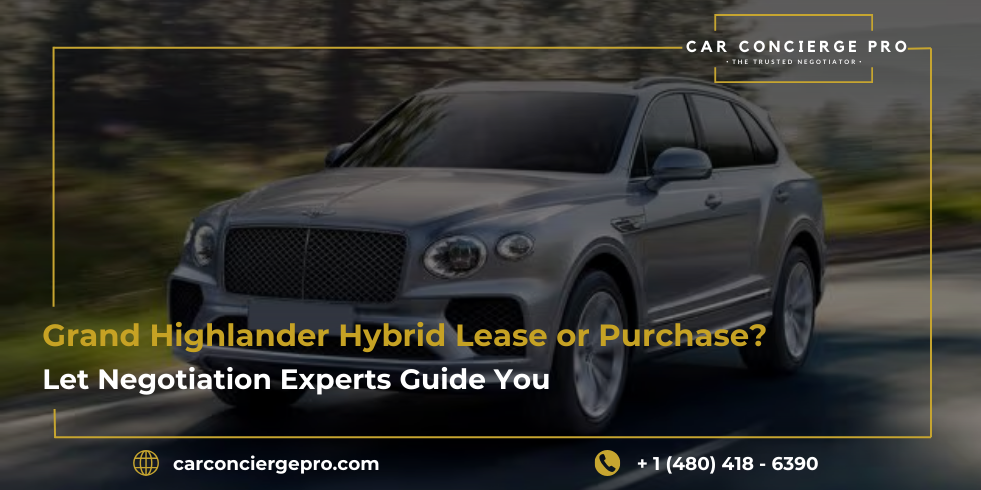


 and Canada
and Canada 
